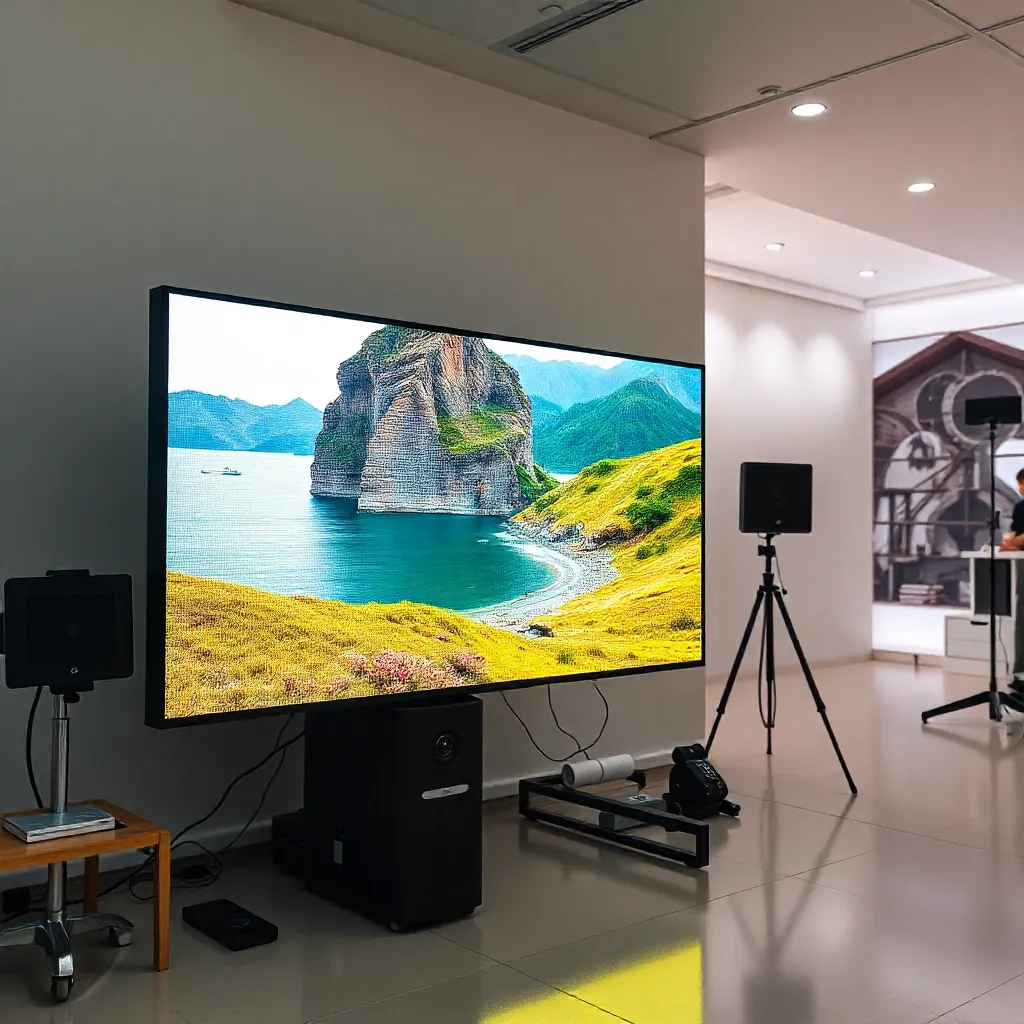Outdoor LED Screens: The Ultimate Guide to Weather-Resistant Displays, Solar-Powered Billboards, and High-Brightness Advertising
Published: 30 Apr 2025
Outdoor LED Screens: Revolutionizing Modern Advertising 🌟
Outdoor LED screens have grow to be a cornerstone of cutting-edge advertising, supplying colourful visuals, dynamic content, and unparalleled versatility. From bustling town centers to far off highways, those monitors captivate audiences with high-brightness presentations, climate-resistant durability, and green solar-powered answers. In this comprehensive manual, we’ll dive deep into the world of climate-resistant shows, solar-powered billboards, and excessive-brightness out of doors marketing, covering the entirety from era to real-world applications.For more about Indoor LED Screen click here
🌧️ Weather-Resistant Displays: Built to Brave the Elements
What Are Weather-Resistant Displays?
Weather-resistant LED screens are engineered to withstand harsh environmental conditions, including rain, snow, dust, and extreme temperatures. These displays are essential for outdoor advertising, ensuring uninterrupted performance and longevity.

Key Features of Weather-Resistant LED Screens
- IP Ratings (Ingress Protection):
- Look for IP65 or higher ratings for dustproof and waterproof capabilities.
- IP65: Protected against low-pressure water jets.
- IP67: Can withstand temporary immersion in water.
- Durable Materials:
- Aluminum or stainless steel frames for corrosion resistance.
- Tempered glass or polycarbonate panels to prevent cracks.
- Thermal Management:
- Built-in cooling systems (fans or heat sinks) to regulate temperature.
- Operates efficiently in temperatures ranging from -20°C to 50°C (-4°F to 122°F).
- Anti-Glare and UV Protection:
- Coatings to reduce glare and prevent color fading from sunlight.
Applications of Weather-Resistant Displays 🌍
- Sports Stadiums: Live broadcasts in rain or shine.
- Public Transport Hubs: Real-time updates in metro stations.
- Retail Billboards: 24/7 advertising in shopping districts.
☀️ Solar-Powered Billboards: Sustainable Advertising for a Greener Future
How Do Solar-Powered Billboards Work?
Solar-powered billboards harness energy from the sun using photovoltaic (PV) panels. These panels convert sunlight into electricity, stored in batteries for nighttime use.
Benefits of Solar-Powered LED Billboards
- Cost Savings:
- Reduce reliance on grid electricity, lowering operational costs.
- Government incentives for renewable energy adoption.
- Eco-Friendly:
- Zero carbon emissions during operation.
- Ideal for remote areas without grid access.
- Energy Independence:
- Operate during power outages.
- Scalable systems for varying energy needs.
Challenges and Solutions 🛠️
- Initial Investment: High setup costs offset by long-term savings.
- Weather Dependency: Hybrid systems (solar + grid) ensure reliability.
- Maintenance: Regular cleaning of panels for optimal efficiency.
Case Study: Solar Billboards in Action 🌍
Cities like Los Angeles and Dubai have adopted solar-powered billboards to meet sustainability goals. For example, a Dubai-based billboard reduced its carbon footprint by 40% annually using solar energy.
💡 High-Brightness Outdoor Advertising: Capturing Attention Day and Night
Why High-Brightness Matters
Outdoor LED screens require high-brightness (measured in nits) to remain visible in direct sunlight. Standard indoor screens (300–500 nits) pale in comparison to outdoor models (5,000–10,000 nits).
Features of High-Brightness LED Screens
- Adaptive Brightness:
- Auto-adjusts based on ambient light.
- Wide Viewing Angles:
- Maintains clarity up to 160 degrees.
- Anti-Reflective Coatings:
- Minimizes glare from sunlight or car headlights.
Applications of High-Brightness Displays 🚗
- Highway Billboards: Grab attention at 60+ mph.
- Times Square: Iconic bright displays in high-traffic zones.
- Shopping Malls: Promote sales with vivid visuals.
🔍 Choosing the Right Outdoor LED Screen: A Buyer’s Checklist
- Assess Environmental Conditions:
- Opt for IP65+ in rainy areas; prioritize thermal management in deserts.
- Evaluate Energy Needs:
- Solar panels for sustainability; hybrid systems for reliability.
- Brightness Requirements:
- 5,000+ nits for direct sunlight; 2,500–5,000 nits for shaded areas.
- Content Strategy:
- Use dynamic content (videos, animations) for higher engagement.
🌐 The Future of Outdoor LED Screens
Innovations like transparent LED displays, AI-driven content optimization, and modular designs are pushing the boundaries of outdoor advertising. Solar-powered and weather-resistant technologies will continue to evolve, making outdoor screens smarter and greener.
❓ FAQ: Outdoor LED Screens
Q1: How long do weather-resistant LED screens last?
A: With proper maintenance, they can last 8–10 years, even in harsh conditions.
Q2: Are solar-powered billboards reliable in cloudy regions?
A: Hybrid systems (solar + grid) ensure uninterrupted operation.
Q3: What’s the ideal brightness for a highway billboard?
A: 7,000–10,000 nits for optimal visibility.
Q4: Can I retrofit an existing billboard with solar panels?
A: Yes! Many companies offer retrofitting solutions.
Q5: How do I maintain outdoor LED screens?
A: Clean surfaces regularly, check for water ingress, and update software.
Final Thoughts 🎯
Outdoor LED screens are reshaping advertising with their durability, sustainability, and eye-catching brilliance. Whether you’re investing in weather-resistant displays for a rainy city, solar-powered billboards for eco-conscious branding, or high-brightness screens for maximum impact, understanding these technologies ensures a smart, future-proof investment.

- Be Respectful
- Stay Relevant
- Stay Positive
- True Feedback
- Encourage Discussion
- Avoid Spamming
- No Fake News
- Don't Copy-Paste
- No Personal Attacks



- Be Respectful
- Stay Relevant
- Stay Positive
- True Feedback
- Encourage Discussion
- Avoid Spamming
- No Fake News
- Don't Copy-Paste
- No Personal Attacks





